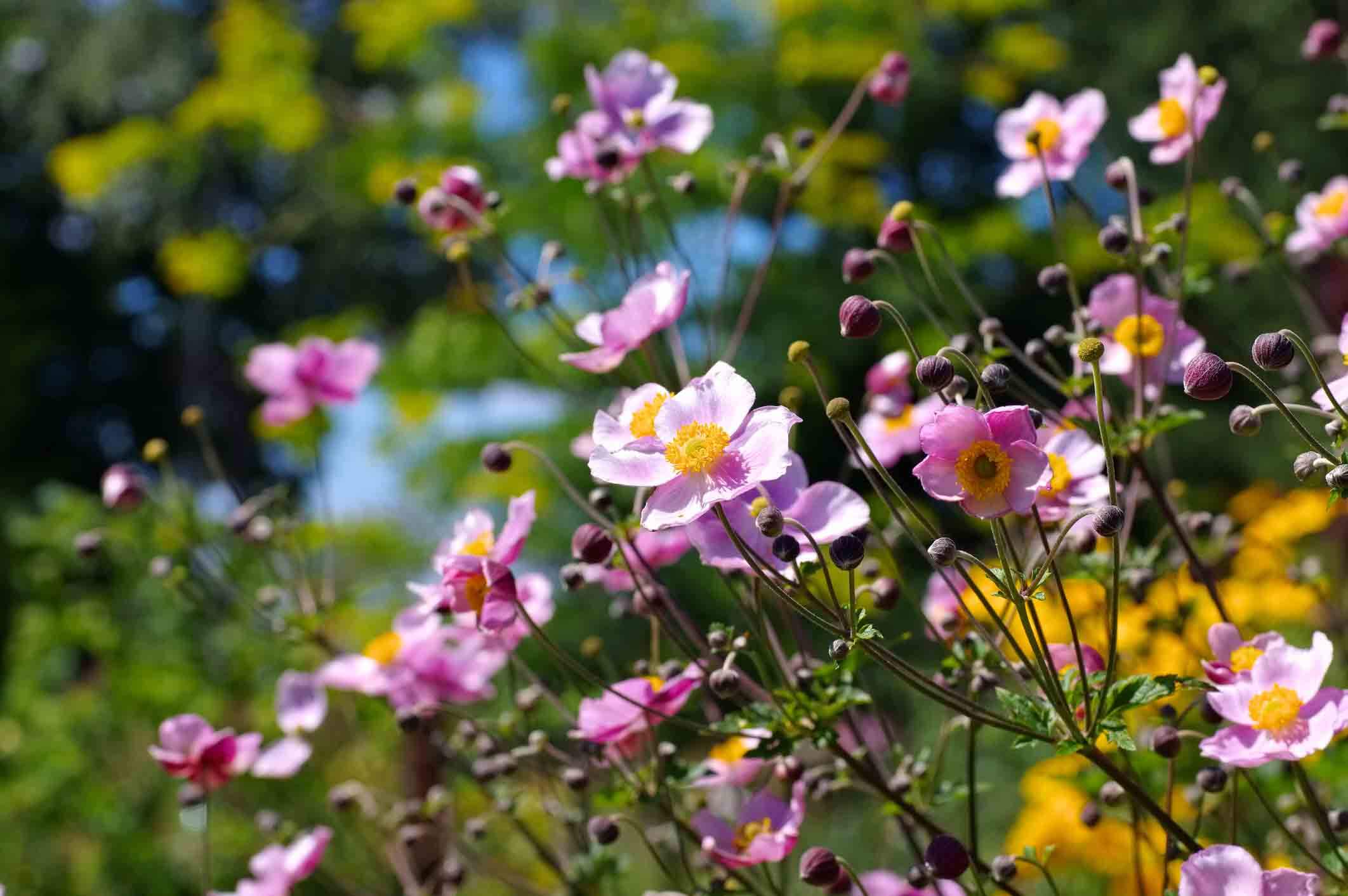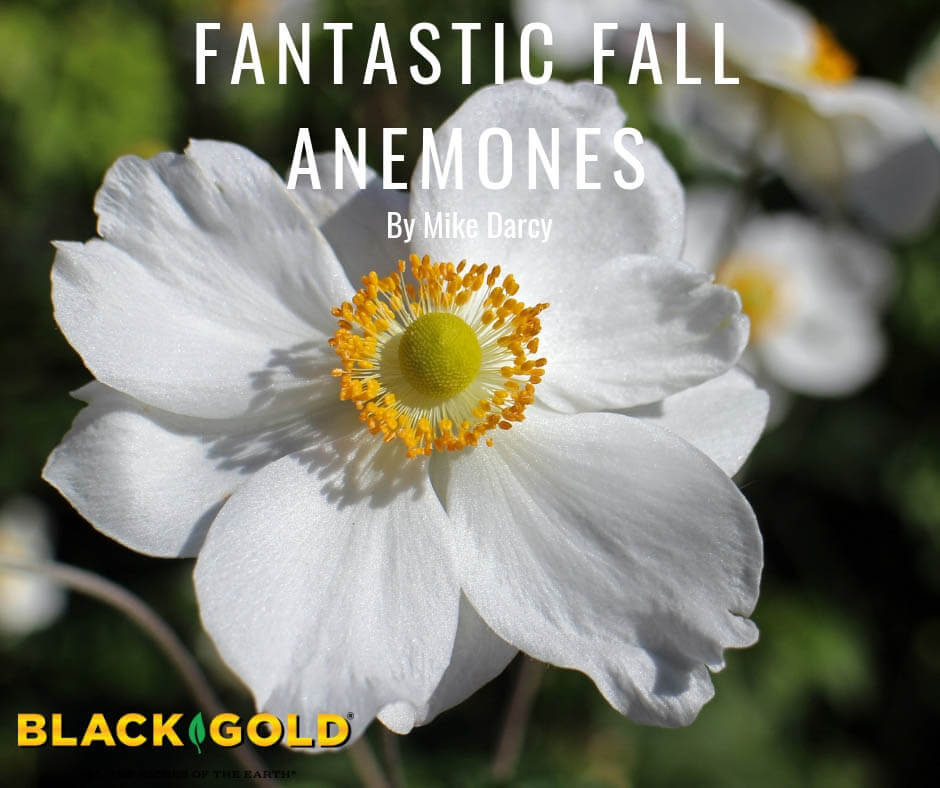Here it is October in the Pacific Northwest, and cool moist weather is upon us after a hot and dry summer. The recent rains and cool temperatures are a welcome relief to many plants (as well as to myself). Many summer annuals are still performing, and the hardy fuchsias and dahlias will continue to flower heavily up until frost. This is also the time when the fall-blooming anemones, such as Japanese anemones and other fall types, look their best.
Japanese Anemones

Fall-blooming anemones are sometimes overlooked and under planted. While there are several different species, by far the most common and widely planted is the Japanese anemone (Anemone hupehensis var. japonica). Despite its name, the “Japanese” anemone is not actually native to Japan, but it comes from China. Wide cultivation in Japan led to the escape of this plant into the wild. The wild Chinese species Anemone hupehensis has tall, airy, single flowers of purple, purple-red, pink, or white, that may bloom from later summer to fall. Anemone hupehensis var. japonica differs in that its flowers are semi-double to double.
Chinese Anemones
Other Asian fall-blooming anemones include the Chinese windflower (Anemone tomentosa), which has white hairs on its leaf undersides and tall, five-petaled, white or pinkish flowers that bloom from late summer to fall. Another Chinese native is the grapeleaf anemone (Anemone vitifolia), which has grape-like green leaves and white or purplish flowers that bloom from late summer to fall. Many popular “Japanese” anemones are actually hybrids of Anemone hupehensis, A. vitifolia, and A. tomentosa, and commonly referred to as A. x hybrida variants.
Fall Anemone Varieties

Here in the Pacific Northwest, the most common are white-flowering Japanese anemones, with the large-flowered ‘Honorine Jobert’ (A. x hybrida ‘Honorine Jobert’) being the best. It usually comes into flower in late August or early September and continues into October. Because of its late-blooming habit, it makes an excellent addition to the fall garden with the bright white flowers being a focal point in the evening Over the years, it will form large clumps with its fibrous, spreading roots. It is best grown in a spot that is protected from the hot midday summer sun, but if given too much shade, its stems will be floppy.

For a semi-double white Japanese anemone, look for the cultivar ‘Whirlwind’ (A. x hybrida ‘Whirlwind’). Two more impressive doubles are the rose-pink ‘Pamina’ (Anemone hupehensis var. japonica ‘Pamina’) and larger-flowered rose-pink ‘Prinz Heinrich’ (A. hupehensis var. japonica ‘Prinz Heinrich’). All are available at more specialized garden centers, and their impressive flowers make them well worth growing. Another common variety is the single pink (A. x hybrida ‘Robustissima’), which can bloom into November. All of these plants spread laterally over time to create substantial clumps, so give them plenty of space.
Growing Fall Anemones
Anemones like humus-rich soil, and Black Gold Garden Compost Blend is an ideal medium to add at planting time or as a winter mulch. Even though anemones like evenly moist soil, they also need good drainage, and compost provides moisture retention, aeration, and facilitates drainage. After plants have finished flowering, cut them back to ground level and divide them, if necessary.
These fall-blooming beauties prefer full to partial sun and are very easy to grow in our Pacific Northwest climate, and once established, plants will continue to spread. I would not consider them invasive because they are easy to control. If you see some plantings in your neighborhood, perhaps a neighbor would be willing to share. It is hard to think of a more reliable fall-blooming perennial.
I always have a difficult time removing summer annuals that are still performing, but the appearance of fall perennials like anemones makes it easier. They bring the season lots of color and beauty just before the garden offers its farewell.



